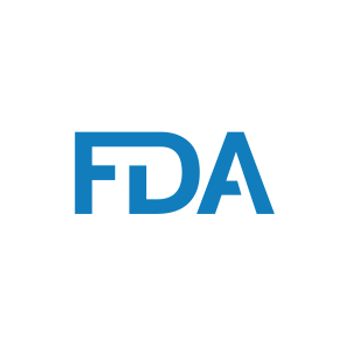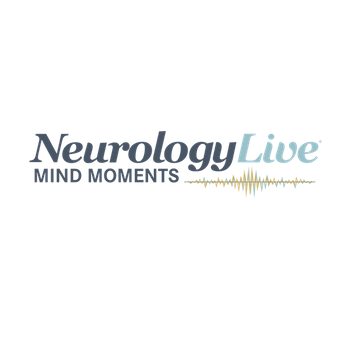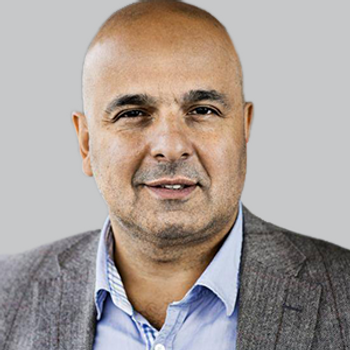
The Mission Thrombectomy 2020+ group outlined a plan to increase the awareness, accessibility, and action for mechanical thrombectomy utilization for patients with stroke globally.

Matt Hoffman, Editorial Director for NeurologyLive, has covered medical news for MJH Life Sciences, NeurologyLive’s parent company, since 2017. He executive produces the NeurologyLive Mind Moments® podcast, and hosted the Medical World News show Deep Dive. Follow him on Twitter @byMattHoffman or email him at [email protected]

The Mission Thrombectomy 2020+ group outlined a plan to increase the awareness, accessibility, and action for mechanical thrombectomy utilization for patients with stroke globally.

Biogen’s investigational Alzheimer disease treatment is currently under review with a Prescription Drug User Fee Act target action date of March 7, 2021, if not earlier.

"Mind Moments," a podcast from NeurologyLive, brings you an exclusive interview with Indu Subramanian, MD.

The company’s implantable neurostimulation system uses its bioelectronic foil technology and aims to meet the needs of those with chronic migraine for whom therapy has failed.

Bruce Cree, MD, PhD, MAS, offers his perspective on recent trial results that put to bed a long line of inconsistent data on the utility of high-dose biotin for multiple sclerosis.

A recently published critique of aducanumab's trial results calls for a third and definitive phase 3 study of the investigational agent, which is awaiting a decision from the FDA.

The 12-month results from the phase 2 TOPAZ clinical trial are anticipated by the second quarter of 2021, according to Scholar Rock.

In addition to recommendations for Alzheimer disease screening, the guidelines also covered stroke risk-related assessments which should be conducted for those with Down syndrome.

The SPI2 study did not replicate the improvements observed in prior study, instead suggesting that biotin (MD1003; MedDay Pharmaceuticals) is ineffective in patients with progressive MS.

Patients treated surgically reported better outcomes, including reduced AED use, higher rates of survival, and fewer epilepsy-related ED visits, hospitalizations, and outpatient visits.

Kristina Simonyan, MD, PhD, DrMed, and Davide Valeriani, PhD, discussed the translational potential of DystoniaNet, and its potential to be adjusted for use in additional disease states.

The Theranica Biotherapeutics remote electrical neuromodulation device is now cleared for the acute treatment of migraine with or without aura in adults, without limitation to episodic migraine.

The lead investigator of the study and assistant professor of neurology at University of Colorado School of Medicine, Jacob Pellinen, MD, spoke to the importance of identifying nonmotor seizures.

A number of poster presentations suggest that fenfluramine (Fintepla; Zogenix) offers a high percentage of patients with Dravet syndrome an opportunity to reduce monthly convulsive seizure frequency

"Mind Moments," a podcast from NeurologyLive, brings you an exclusive interview with Raman Malhotra, MD.

Experts in the diagnosis and treatment of Duchenne muscular dystrophy share their perspectives on the complex care of this patient population in the NeurologyLive® Insights series “Management of Duchenne Muscular Dystrophy.”

The findings of this multicenter cohort may have implications for diagnosis, prognosis, and disease monitoring, as well as for clinical trials targeting disease-specific proteins in DLB.

Kristina Simonyan, MD, PhD, DrMed, and Davide Valeriani, PhD, offered insight into the use of DystoniaNet, which identified the condition with 98.8% accuracy in a matter of 0.36 seconds.

For those with nonmotor seizures at onset who developed seizures with motor involvement later, the median number of days to diagnosis from motor symptom onset was only 13 days, compared to 616 days for the overall nonmotor group.

The combination agent resulted in a 44% lower risk of death for patients with ALS, with a 6.5-month longer median survival compared with placebo.

The recently approved oral solution, known as JZP-28 (Xywav), was associated with clinically meaningful improvements in Epworth Sleepiness Scale, Patient Global Impression of Change, and Idiopathic Hypersomnia Severity Scale scores.

If approved, rimegepant will be the first and only anti-CGRP agent indicated for both the preventive and acute treatment of migraine.

The multinational data revealed a risk of stroke of 0.5%, with the need for mechanical ventilation and the presence of ischemic heart disease being the most predictive indicators of stroke.

The investigators noted that their results can be replicated independently in a real-world cohort, they may have clinical implications for daily practice.

"Mind Moments," a podcast from NeurologyLive, brings you an exclusive interview with Costantino Iadecola, MD.

Data from a long-term phase 2 study in episodic migraine suggest that those treated with erenumab maintain reductions in both monthly migraine days and use of acute migraine medications in the long-term.

Patients treated with Axovant’s gene therapy AXO-Lenti-PD reported improvements of 40% in UPDRS-III scores, and 71% improvement in activities of daily living.

Results from a 24-week phase 2a trial and its 2-year extension suggest that patients taking vamorolone experienced motor outcome improvements compared to corticosteroid-naïve individuals.

The initiative, funded by Jazz, will include educational multimedia content such as a series of podcasts with expert interviews discussing sleep and related disorders.

Julio J. Fernandez-Mendoza, PhD, a clinician-scientist at Penn State Hershey Sleep Research & Treatment Center, of Penn State Health, spoke to the implications of a recent study he and colleagues conducted.